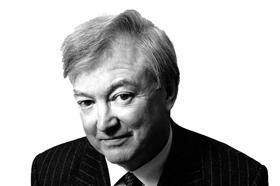How many steps does it take to get the losing party to pay up as ordered? Extraordinarily many, at times, as this case shows

What’s to be done when the dispute goes to adjudication and the opponent says there is no jurisdiction and loses, then loses in the actual adjudication but won’t pay up, then loses in the High Court enforcement and still won’t pay up, then faces a drastic action enforcing the enforcement and still won’t pay up – but instead throws the kitchen sink at the winner in a counterclaim for a £2m that puts the original adjudication award of £200,000 in the shade?
Hong Kong businessman Mr Robbie Brothers bought the lease on an extraordinary building in Richmond. It is The King’s Observatory in the Old Deer Park, Twickenham, built in 1769 by King George III, who wanted a new house with a telescope in a rotating roof dome to observe Venus inching across the sun. Some 250 years later, Mr Brothers engaged architect Donald Insall Associates Ltd (DIA) to refurbish the house. It looks superb now. The only snag is that the architect is miffed because his fee of around £200,000 has not been paid.
The practice began an adjudication against Mr Brothers’ company, Kew Holdings Ltd (Kew). Positions were taken about whether the respondent was Kew or Mr Brothers. The adjudicator found it was Kew. The adjudicator then found that Kew owed DIA £208,000, but the respondent wouldn’t pay up. The High Court ordered Kew to pay up but was ignored. Now what? DIA’s lawyers slapped an interim charging order on the property in respect of the, by now, £268,000 sum. Still the debt wasn’t paid. The court slapped a final charging order on the property; still no go. Now the architect has gone for an order to force the sale of the grand old house, and that is pending in the High Court. Mr Brothers (or Kew) has entered a defence, alleging they have a good claim for architect’s negligence for £2m which would trump the money otherwise owed to the architect. I dread to think what the legal fees are thus far, and even worse, what’s to come.
Refusal to comply with a court order is an abuse of the court process
Kew is arguing now that the architect’s drawings were late and inadequate, and that the architect gave inadequate advice and has overcharged. So, what is the architect’s next move on the litigation chessboard? It is to ask the court to stop Kew in its tracks. After all, the court has ordered the £200,000 be paid and it doesn’t take well to being ignored. A previous case summarised a set of principles where the adjudicator’s decisions were ignored. The defaulting party would be prevented from bringing an action against the party deprived of cash when there is bad faith or where there is oppressive or unreasonable behaviour. Refusal to comply with a court order is an abuse of the court process.
The court in this case had already ordered Kew to pay up. That was a year ago. Now the court decided there had been a deliberate, persistent refusal to comply with the enforcement order of February 2019. It took a robust approach to requiring compliance with adjudicator’s decisions in furtherance of the “pay now, argue later” principle laid down in the Construction Act. Not paying this was unreasonable and oppressive behaviour. The court went on to say that Kew could not rely on its claims of professional negligence to avoid payment of the outstanding debt. So, the latest action by Kew against the architect was stayed, pending payment to the architect.
The next chessboard move was to require Kew to provide ‘security for costs’ in the negligence action
The architect’s lawyers were by now in their stride. The next chessboard move was to require Kew to provide “security for costs” in the negligence action. This move is available to a defendant when there is reason to believe that the claimant will be unable to pay the defendant’s costs, if ordered in the forthcoming trial to do so. What might the legal costs of the architect come to? The lawyers are put on their mettle to produce an accurate forecast here. It is £700,000 legal costs for the defence.
The court then takes a look at the claimant’s wherewithal. Kew is registered in the Cayman Islands. The property King’s Observatory is its sole asset (the lease, that is). Kew receives no income from the house (but wait, it is now for rent at £37,500 per month); its filed tax returns show significant and continuing losses. Mind you, Strutt & Parker valued the property at £10m, but there is already a charge over the asset of £5m. The test, though, is whether Kew could immediately satisfy an order for costs in favour of the architect. Mr Brothers offered a personal guarantee of £450,000. His assets were explored; he is in good order. So, said the court, Mr Brothers could borrow money to provide security for costs. The judge ordered security at £600,000.
The upshot of all this is something of a downer for Mr Brothers and Kew. He now is stopped from bringing his claim against the architect unless he pays the architect the money owed from the adjudication and pays into court £600,000 to keep the architect safe on legal costs, and – wait for it – pays all this within 14 days. But here is no news yet about whether that happened.
Tony Bingham is a barrister and arbitrator at 3 Paper ∫√…´œ»…˙TVs, Temple



























No comments yet